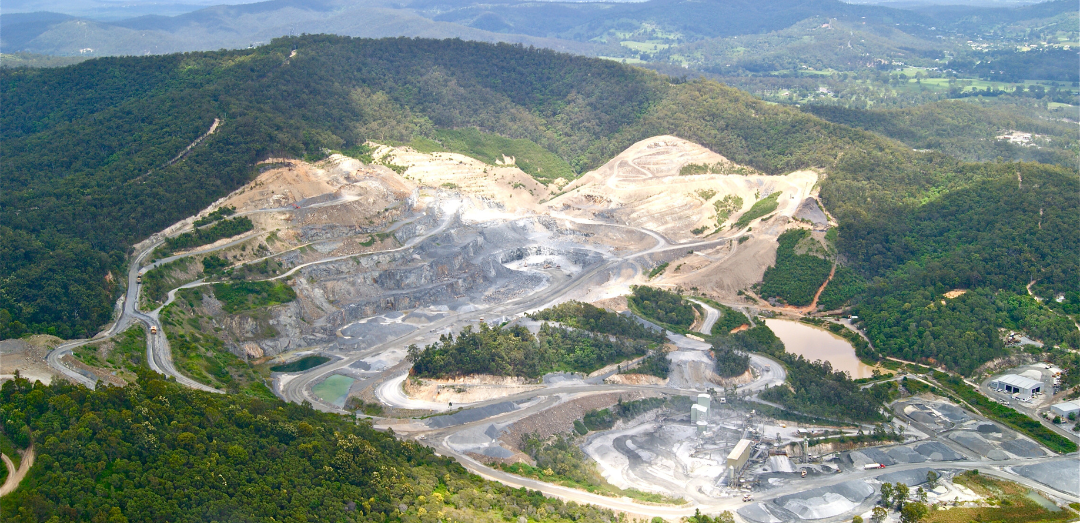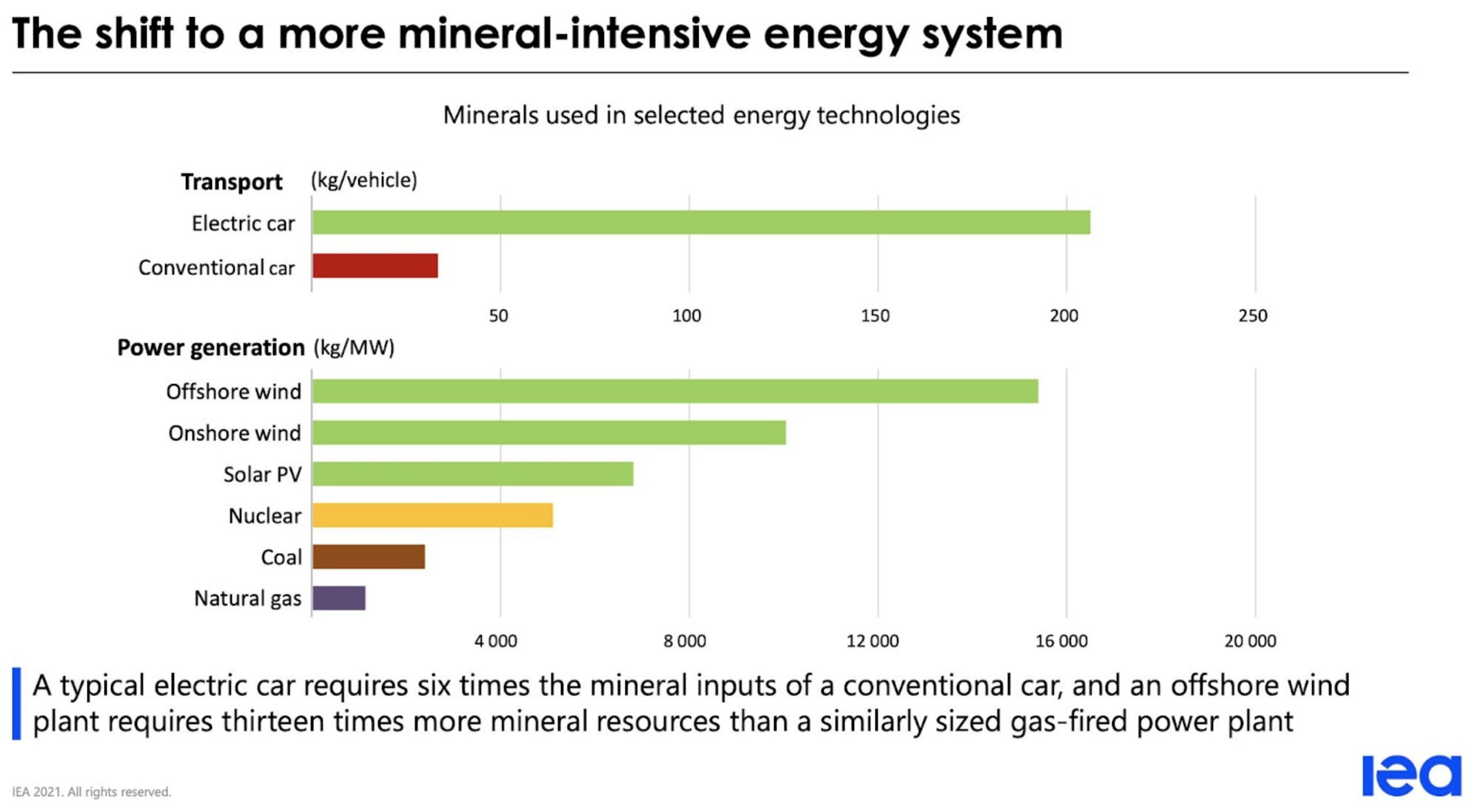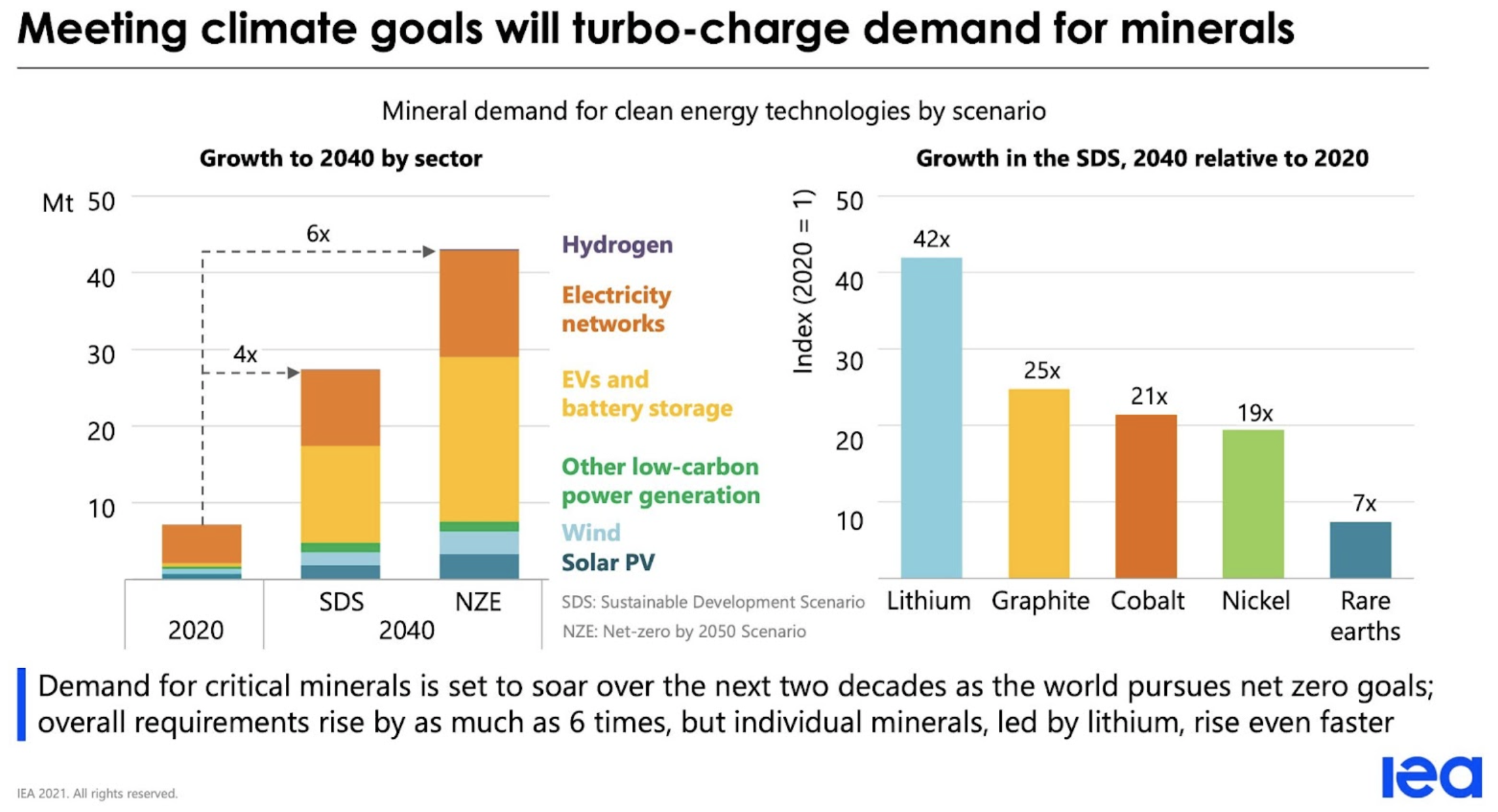
I strongly support renewable energy initiatives. From electric vehicles to solar panels, I’ve worked hard to build a greener life for myself and my family.
But adopting renewable energy becomes more complex and resource-intensive as you scale up. How can you adapt, or in some cases, rebuild an energy grid that already struggles to keep up with demand? What does that transition to renewable energy look like for the typical American?
Well, it might surprise you, just like it surprised me, that to build and implement renewable energy technologies like batteries, motors, panels, and stronger power grids, our world needs to invest heavily in mining minerals like never before.
Essentially, sustainability requires non-renewable mining. How on earth does that add up? Let’s discuss.
We Meed More Minerals Right Now
In May of 2021, The International Energy Agency, or IEA, published a flagship report titled “The Role of Critical Minerals in Clean Energy Transitions”. This report details the minerals that we need right now, such as:

- Lithium, nickel, cobalt, manganese, and graphite for batteries
- Rare earth elements for wind turbines and electric vehicle motors
- Copper, silicon, and silver for solar panels
- Copper and aluminum for electricity networks

The majority of these minerals, about 75%, exist primarily in China. Over 70% of the world’s supply of Cobalt, a precious mineral that we need for batteries, is located in the Democratic Republic of Congo, a government that does not prioritize environmental policy initiatives and exploits child labor.

It’s clear we need renewable energy right now. The path to it, however, is blurred and complicated by sovereignty, politics, and geography. That is a tough collection of issues to solve on a global scale.

How To Reach Clean Energy As Soon As Possible
IEA recommends six key areas of action to enable an accelerated transition to clean energy:
- Ensure adequate investment in diversified sources of supply
- Promote technology innovation at all points along the value chain
- Scale up an efficient and proper recycling system for products like Electronic Vehicle, or EV, batteries
- Enhance supply chain resilience and market transparency
- Advocate for social change and implement better governance standards
- Strengthen international collaboration between global supply stakeholders
I read that list and think to myself, well what is this actually saying? Well, basically, we need to do better. We’re behind the curve right now. But now we have a game plan, more momentum than ever, and more governments and leaders than ever before taking this dire issue seriously. For decades, we’ve been on a fast track to disaster. It’s time we shift gears toward a sustainable future.
Sustainability Requires Non-Renewables. How Do You Feel About This?
It can be deflating to learn this information. After all, clean renewable energies are supposed to minimize and eliminate the use of nonrenewables. In order to become greener, we need to use the very nonrenewables we wish to keep.
I think an important thing to keep in mind is that a shift from our current energy and fuel sources to cleaner options will be better for our atmosphere, our planet, and our health. It’s not a perfect solution, but it’s what we have to work with right now. We owe it to future generations to try anything and everything that results in a greener and cleaner planet to live with.
We are in this together. Let's Go Green.

